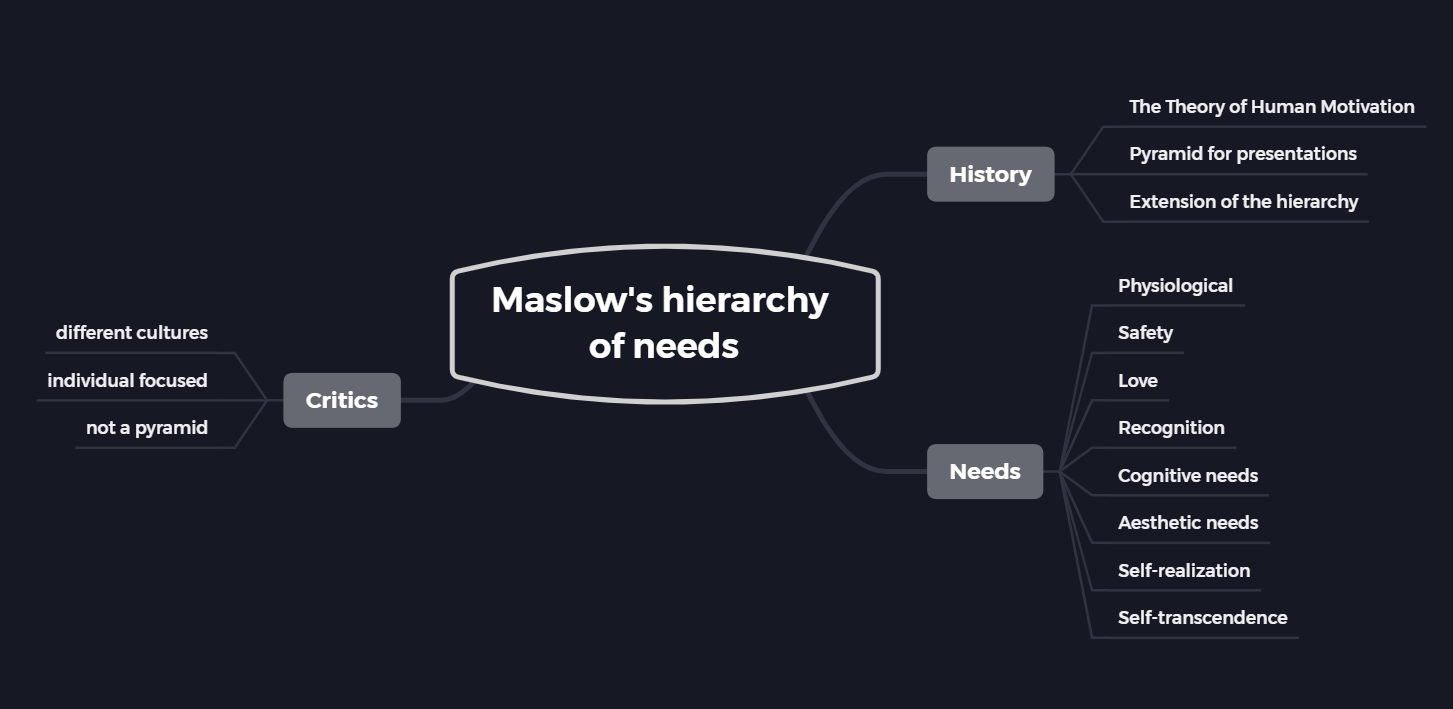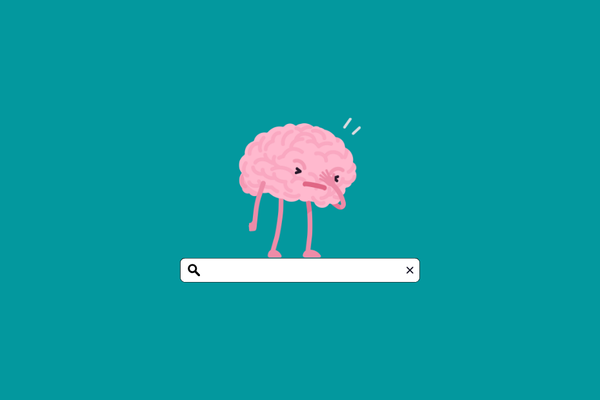Maslow's hierarchy of needs in real life
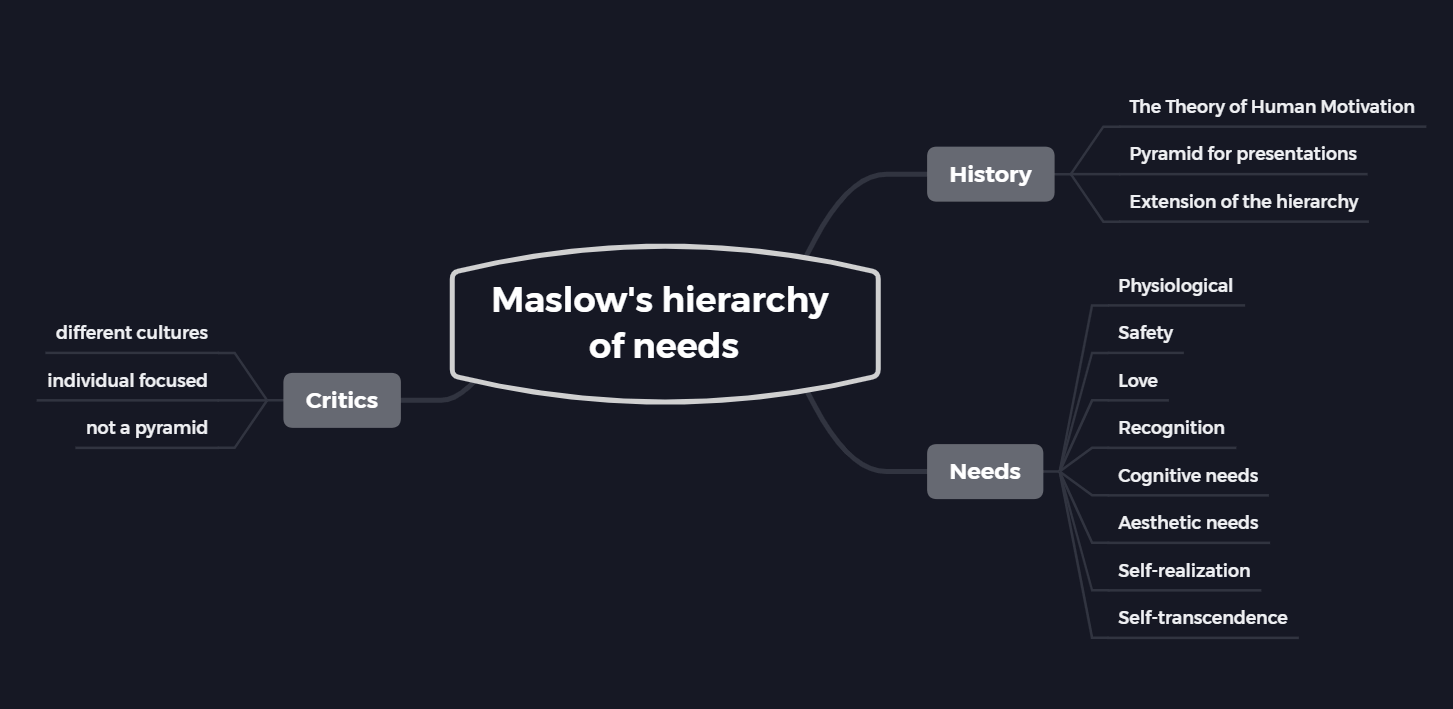
Maslow's hierarchy pyramid is misunderstood, misinterpreted, considered by many to be outdated, and needs to be extended according to the notes of its creator, yet it can easily explain the basic sources of our motivation and the background of our actions.
Maslow’s hierarchy of needs provides us with a tool to learn not only about the ideas behind our own decisions but also about the factors that motivate others.
However, textbooks, management magazines, and corporate training attribute too much importance to this scientifically unproven tool, so for many of us, the bullshit detector activates when we see the American psychologist’s famous model as an Egyptian pyramid many times on a PowerPoint presentation.
Learning about and applying the Maslow Pyramid can help motivate ourselves and others, and can be useful during goal-setting, planning, and prioritization.
In addition to the explanation of Maslow's hierarchy of needs, you can read about the misunderstood and misinterpreted conclusions of the pyramid and the limitations of the tool.
What is Maslow's hierarchy of needs?
Maslow’s hierarchy of needs is a motivational theory that gathers human needs on five levels. The different levels of need are often portrayed as a pyramid. This is from where the theory got its name.
The popular motivational model is named after psychologist Abraham Maslow, who summarized his views in a 1943 article in The Theory of Human Motivation. According to Maslow, meeting our needs motivates our actions, and our needs can be categorized.
According to Maslow’s original theory, needs form a hierarchy. To get to the higher levels of needs, the lower levels must first be met
(Maslow's opinion on this has also changed since the original article was published, we will return to the issue in the article).
To avoid pseudoscience, it is worth noting that the conclusions of the Maslow pyramid have not been proved by scientific research. The pyramid is an idea based on observation rather than a scientific theory.
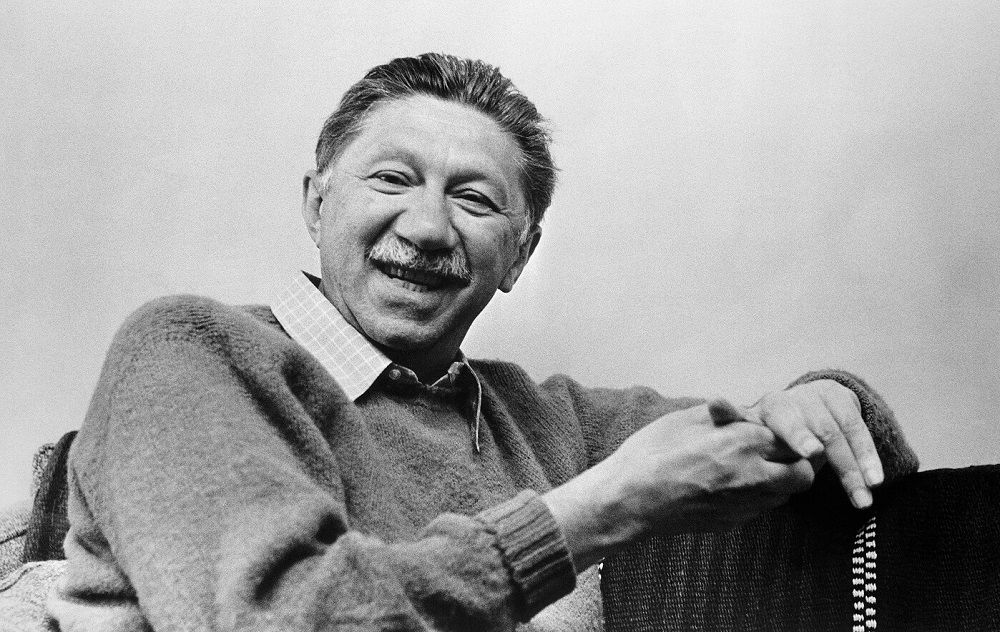
Levels of Maslow's pyramid
Although Abraham Maslow never drew a pyramid, a corporate consultant looking for a spectacular illustrative tool for his presentation made the theory widely known through a pyramid-like representation of Maslow’s hierarchy of needs.
The model originally divided the needs into five levels, but by detailing and expanding the levels, we can now talk about several levels. The lower levels are the so-called deficit needs and then approaching the top of the pyramid, we find growth-based needs.
While deficiency needs stem from a lack of a basic human need (food, health, security) and strive to meet it at some level, growth-based needs do not start from a lack of something but an individual’s desire for development.
The traditional interpretation of Maslow's hierarchy of needs:
- Physiological needs
- Safety needs
- Love, the need to belong somewhere
- The need for recognition
- Cognitive needs
- Aesthetic needs
- Self-realization
- Self-transcendence
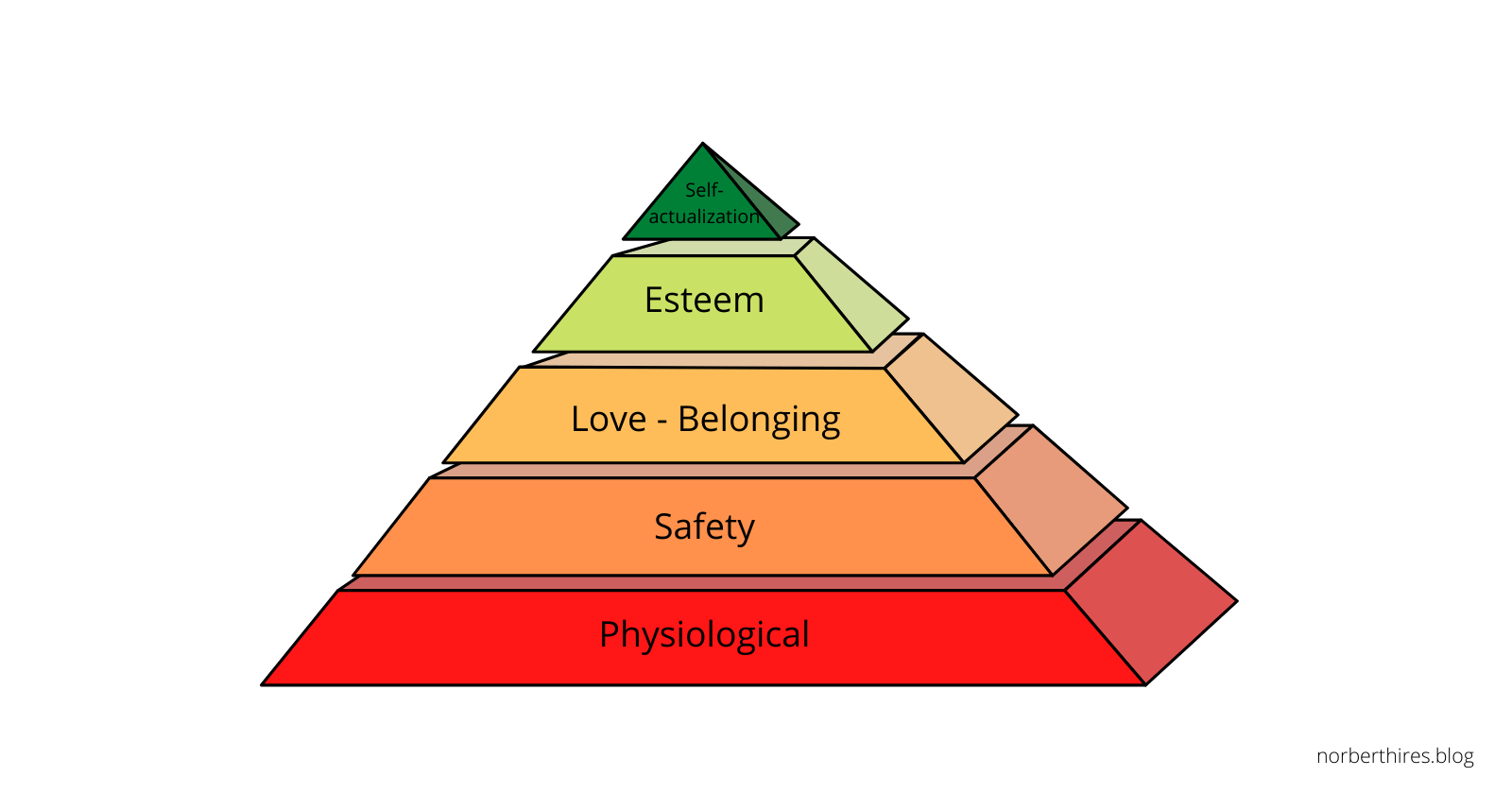
Physiological needs
At the bottom of the Maslow pyramid are our most basic needs for survival. By physiological needs, we mean all the elements without which the human body would not function, and in its absence, it would become the only focus of our thoughts and efforts.
Food, drink, air, adequate temperature, sleep, clothing are among the first levels of the hierarchy of needs.
Safety needs
People love order, predictability, and control over their lives, Maslow says. Security needs meant the cave to prehistoric man, providing shelter from the uncertainties of the weather, attacks of animals, and enemy hordes.
Today, security can mean our state of health, our physical security, or, for example, our financial security.
While in prehistoric times a cave covered most of the security needs, today in addition to housing, social constructions such as the police, hospitals, schools, or even the pension system are considered as safety needs.
The need for love and belonging somewhere
After meeting basic deficit needs, the Maslow pyramid is taking a social direction. The sense of belonging somewhere can be satisfied by human relationships, family, friends, and different communities.
The third level includes behavioral patterns and phenomena such as friendship, trust, acceptance, and team spirit.
Accepting and loving others is an important emotional need that helps prevent and overcome problems such as loneliness, depression, and anxiety.
The need for recognition
The fourth level of the hierarchy of needs now includes not only the need for acceptance but also the need for recognition.
Maslow distinguishes the desire for recognition according to two categories:
- Self-esteem: self-esteem, dignity, independence
- Gaining the respect of others: status, prestige, popularity, recognition
The need for recognition is particularly important for children and anyone who does not yet have sufficient self-knowledge and self-esteem.
Cognitive needs
The desire for knowledge, the thirst for knowledge, the discovery of the unknown represents the next level of Maslow’s pyramid. Some typologies discuss cognitive and aesthetic needs within self-realization.
However, in the age of infinite information and knowledge workers, it is worth paying special attention to and dealing with our relationship to information.
Aesthetic needs
The need for beauty, order, purity, and purity. One of the highest levels of the needs hierarchy.
Self-realization
Through self-realization, we can become an individual who makes the most of his or her abilities and makes full use of the opportunities available to him or her.
In his original 1943 study, Abraham Maslow considered self-realization to be the pinnacle of the hierarchy of needs, but in his later writings and notes, we can already read about the correction of the Maslow pyramid and a new level.
The new peak is rightly forgotten by most studies, as Maslow did not publish about it in a major scientific journal, and its discussion fell behind with the death of the psychologist.
Self-transcendence
“Transcendence refers the very highest and most inclusive or holistic levels of human consciousness, behaving and relating, as ends rather than means, to oneself, to significant others, to human beings in general, to other species, to nature, and to the cosmos." - Abraham Maslow
Almost thirty years after outlining the theory of the hierarchy of needs, in his last years, Maslow dealt with self-transcendence, which he described as the missing element of his theory, the top of the pyramid.
So why don’t we talk about self-transcendence as part of the original Maslow pyramid?
Because transcendence raises fundamentally spiritual concerns, which psychologists are still wary of. Furthermore, the Maslow Pyramid is by itself a management cliche that describes what needs to be done to motivate an INDIVIDUAL with easy-to-understand levels. A difficult-to-interpret spiritual concept that goes beyond the individual would just ruin the simplicity of the Maslow pyramid.
At the same time, self-transcendence can also be seen as a response to frequent criticism of the hierarchy of needs. According to critics of the Maslow pyramid, the model is infinitely selfish, deals exclusively with the individual, and also examines the relationship of the individual to society from the perspective of the individual. Introducing a state beyond the individual would disarm this very critique, so the motivation behind the new level is more than suspicious.
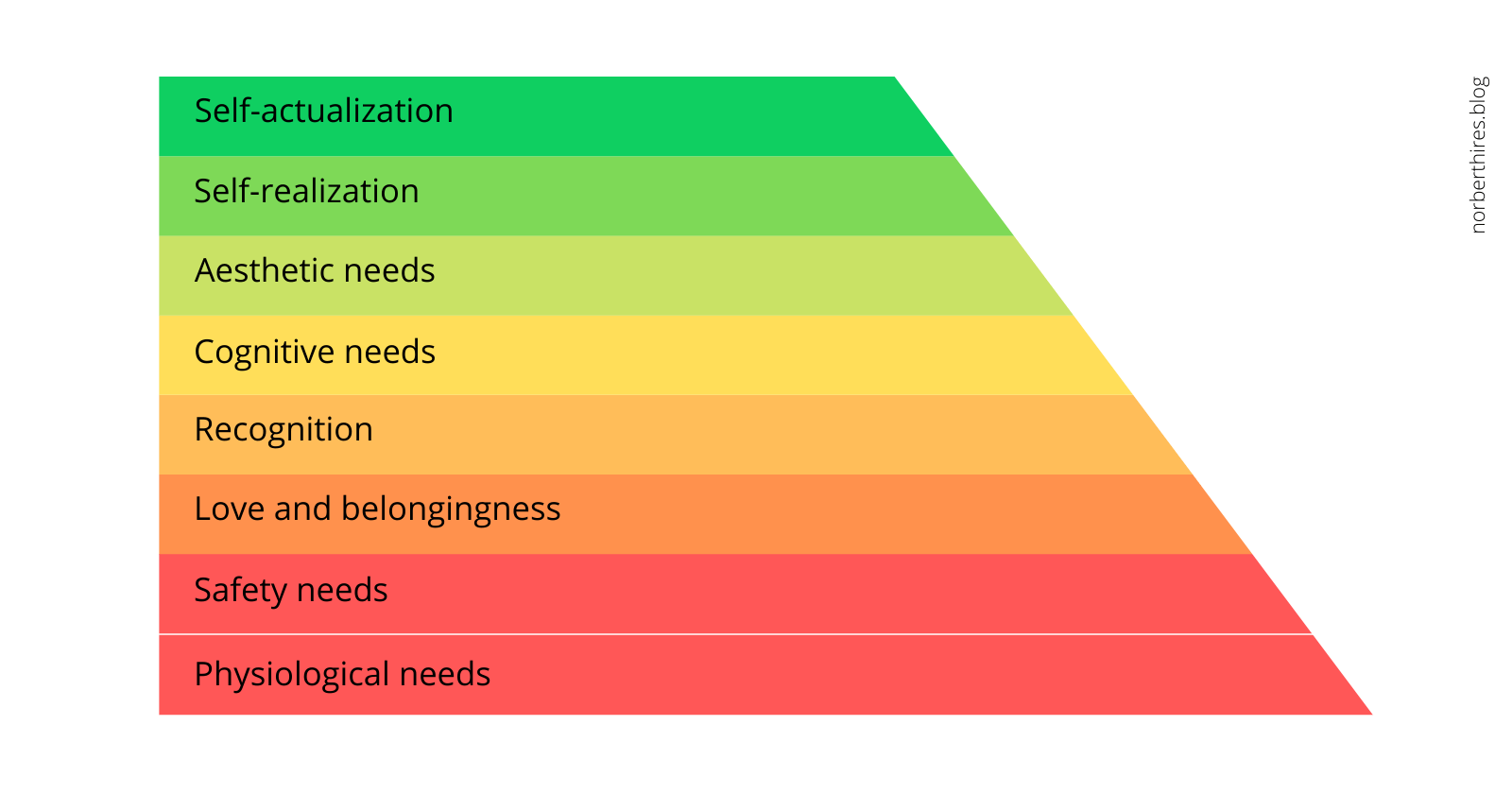
The major criticism of Maslow's hierarchy of needs
- The pyramid is based on the peculiarities and values of Anglo-Saxon culture, so it is of little or no applicability to societies of different cultures.
- The model does not take into account differences between individuals or different preferences at different stages of life. Everyone is motivated differently and everyone has a different relationship to different needs and this can even change over time.
- The Maslow Pyramid is not really a pyramid. Levels cannot be seen as overlapping needs, as we are sometimes willing to sacrifice lower-level needs for a higher-level goal. Think of the countless starving poets who put self-realization before their physiological needs.
Maslow’s hierarchy of needs is a simplifying model that can help us understand the motivations of ourselves and others.
The pyramid is not a drag-and-drop solution that can be applied to everyone, but it is illustrative and simple, which is why it is used by so many people.
Use the 1943 version of the pyramid or the augmented model, but don’t forget its limitations and distorting generalizations!
Do you have an opinion on Maslow Pyramid? Add your comment! Interested in similar self-improvement content? Subscribe to the newsletter!
Lastly, some frequently asked questions about Maslow's theory of needs:
What does motivation mean?
Motivation is nothing more than a general willingness to act to achieve something.
What are human needs?
Every living thing has needs — the prerequisites for survival or prosperity — that need to be met. Basic needs are for the survival of the individual and other needs are for improving the quality of life.
What does hierarchy mean?
Hierarchy is a system of dependencies in which people or things are categorized according to certain criteria, along with an indication of the relationship of subordination between them.
